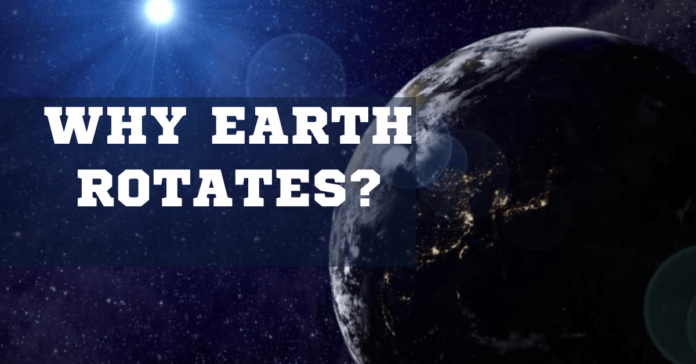Introduction to Why Earth Rotates
Have you ever gazed up at the night sky and pondered why Earth rotates? It’s a question that has fascinated humanity for centuries, sparking curiosity and driving scientific inquiry. In this article, we’ll delve into the captivating mechanisms behind this cosmic dance and explore the reasons why our planet spins.
Understanding Why Earth Rotates
The Earth spins on its axis, an imaginary line passing through its center from the North Pole to the South Pole. This rotation is responsible for the cycle of day and night that we experience every 24 hours. But what drives this perpetual motion?
Gravitational Influence
One of the primary reasons behind Earth’s rotation is its gravitational relationship with the Sun and other celestial bodies. As the Earth orbits the Sun, gravitational forces exerted by the Sun and Moon contribute to its rotation. This gravitational tug-of-war imparts angular momentum to our planet, causing it to spin on its axis.
Formation and Conservation of Angular Momentum
The rotation of Earth can also be traced back to its formation billions of years ago. During the early stages of the solar system’s evolution, a spinning cloud of gas and dust gradually coalesced to form the planets. As this protoplanetary disk collapsed under the force of gravity, conservation of angular momentum caused it to spin faster, much like a skater pulling in their arms to spin faster.
Impact of Collisions
Additionally, the Earth’s rotation may have been influenced by significant impacts during its formation. The collision with a Mars-sized object, believed to have formed the Moon, could have imparted rotational energy to the Earth. Such cataclysmic events shaped the dynamics of our planet and contributed to its rotational motion.
Geophysical Factors
Geophysical processes within the Earth also play a role in its rotation. The movement of molten iron in the outer core generates a magnetic field through a process known as the geodynamo. This magnetic field interacts with the solar wind and other cosmic forces, influencing Earth’s rotation.
Balance of Forces
Ultimately, Earth’s rotation is a delicate balance of gravitational, geological, and astronomical forces. The interplay of these factors governs the planet’s motion and gives rise to the phenomena we observe, from the diurnal cycle to the precession of the equinoxes.
Implications for Life
The rotation of Earth has profound implications for life on our planet. The alternation of day and night regulates biological rhythms, influencing everything from sleep patterns to migration behaviors. Moreover, Earth’s rotation contributes to climate patterns, ocean currents, and atmospheric circulation, shaping the environment that sustains life.
Conclusion to Why Earth Rotates
In conclusion, the question of why Earth rotates is a multifaceted puzzle with roots deep in the cosmic history of our planet. From gravitational interactions to geophysical processes, a myriad of factors converge to drive the perpetual spin of our home in the cosmos. Understanding Earth’s rotation not only enriches our scientific knowledge but also deepens our appreciation for the intricate workings of the universe. So, the next time you gaze up at the star-studded sky, remember that you’re witnessing the mesmerizing dance of a rotating planet suspended in the vastness of space.
Read more interesting articles about Space.
